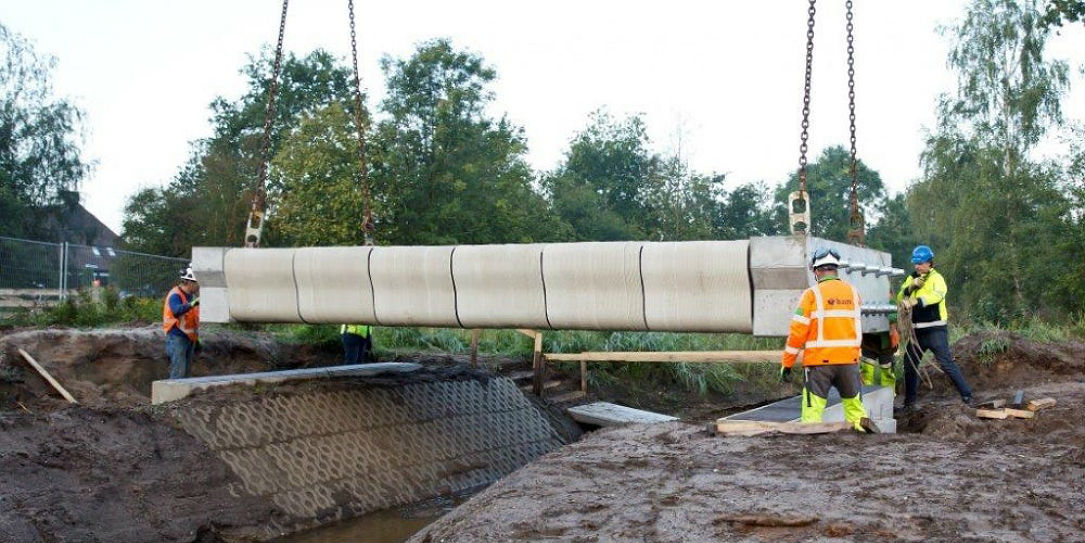A new 3D printed bridge in the Netherlands is now open to the public. This bridge, designed specifically for cyclists, was designed by Technical University of Eindhoven and the construction company BAM Infra. This isn’t the first 3D printed bridge out there, in fact one was just built in Madrid last year, this inventive new trend seems to be catching on.
The Netherlands is joining other countries such as the United States and China by taking the lead in cutting edge technology like 3D printing, using computers, and robotics to construct objects and structures from scratch.
How is it made?
The 3D printed bridge is made using materials like reinforced concrete and steel cables. The bridge is printed using a huge purpose built cement printer and is made in separate pieces that can later be assembled on the construction site.
Liquified mortar is put through a printhead that prints individual layers that are approximately 1 cm thick. Before each of the layers dried a steel wire is fed down through the head for reinforcement. Once the layers have been completed the section will stand about 3 feet tall.
Once the pieces are transported to the construction site they will be glued together and hoisted into place. When the bridge is completed it will stretch over 26 feet long, 11.5 feet wide, and 3 feet thick. It took 3 months for robots to print all 800 layers of pre-stressed, reinforced concrete. While being tested, the bridge could support over 5 tons. Much more weight than needed for it’s intended cycling purposes. The bridge is expected to last 30 years.
“We are looking into the future,” said Marinus Schimmel, the head of BAM, adding that his company was “constantly searching for a newer, smarter approach to addressing infrastructure issues and making a significant contribution to improving the mobility and sustainability of our society.” He also added to his statement that 3D printing meant “fewer scarce resources were needed and there was significantly less waste.”
“This greatly reduces the amount of waste and decreases our use of scarce raw materials. And this working method also has a positive effect of CO2 emissions during the production process of the bridge.”

